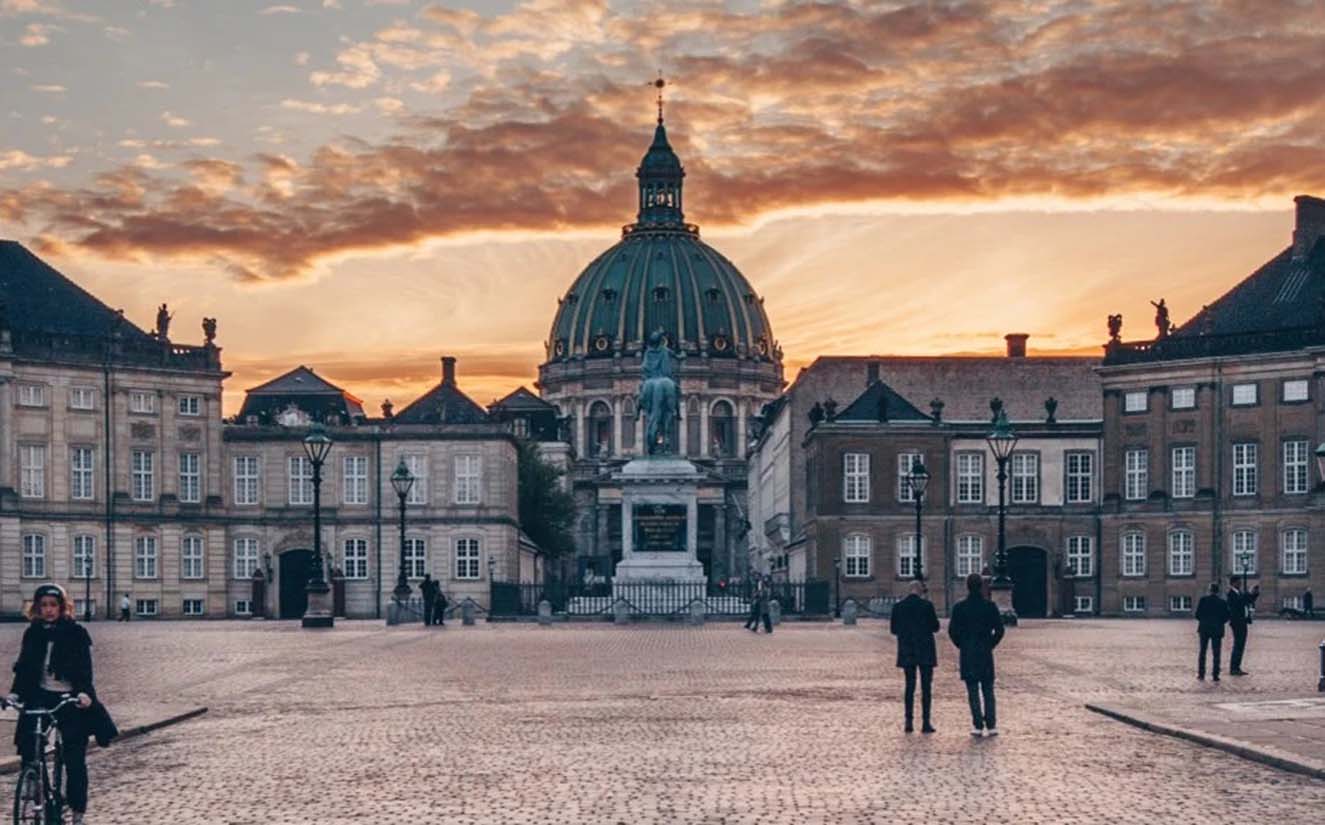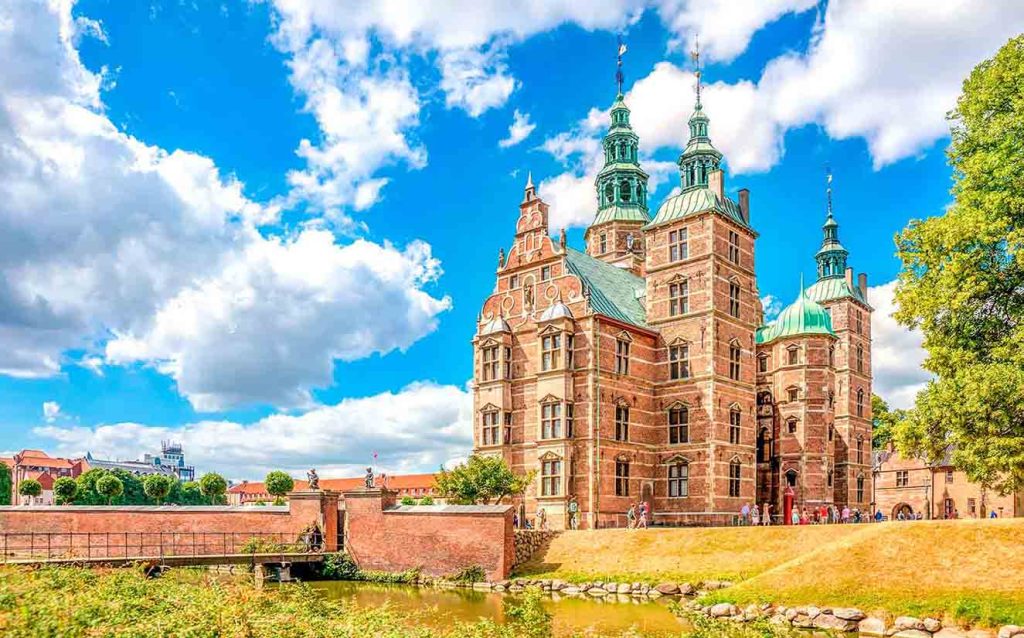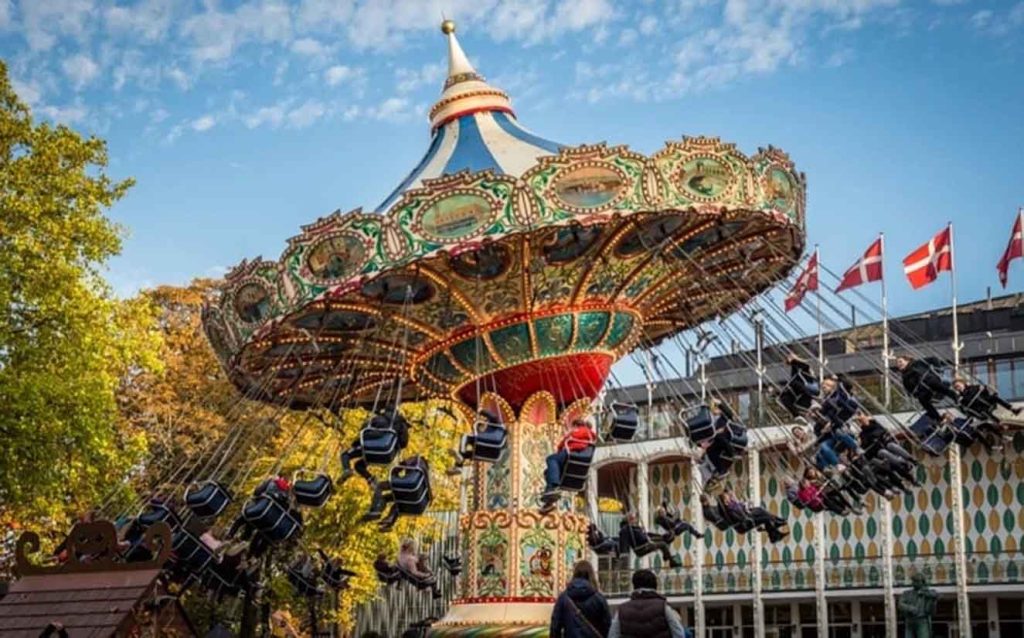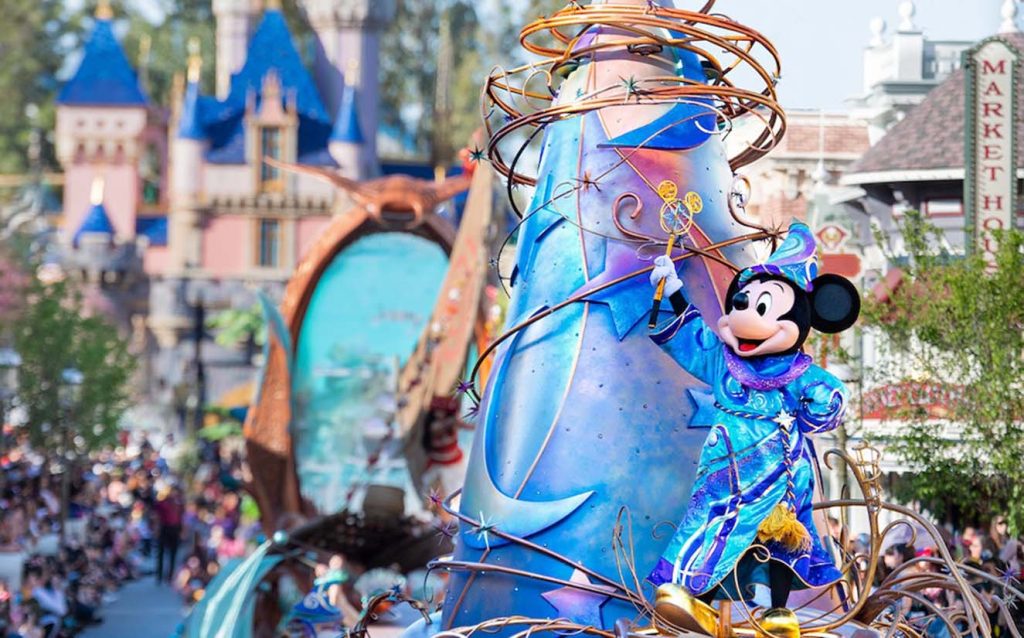
When I first arrived in Copenhagen, I was immediately struck by the harmony between its vibrant modernity and its rich historical roots. The city’s traditions are deeply embedded in its architecture, food, and daily life, offering a perfect glimpse into Danish culture. From the medieval streets to the grand palaces, Copenhagen is a city that whispers stories from the past at every turn. As someone who appreciates both the old and the new, I couldn’t wait to dive into the heart of this city and experience its history firsthand.
1. The Royal Palace: Amalienborg
My journey through Copenhagen’s history began at Amalienborg Palace, the stunning residence of Denmark’s royal family. Walking up to the palace, I was mesmerized by its elegant architecture, a fine example of Rococo design. The palace square, with its distinctive octagonal shape, is a space that feels both grand and intimate, and it was easy to imagine the royal family moving through the courtyards in the past centuries.
The changing of the guard ceremony that takes place daily at noon was a particular highlight. There’s something captivating about the precise movements of the guards, the beating of drums, and the sense of timeless tradition it evokes. It felt like stepping into a scene from the 18th century, and for a moment, I forgot I was in the 21st century.
Exploring the interior of Amalienborg, I learned about the Danish monarchy’s history. The royal rooms are beautifully preserved, with opulent furniture, tapestries, and portraits that tell the story of Denmark’s kings and queens. The royal family may be more modern now, but the palace remains an enduring symbol of Denmark’s rich royal history.
2. Rosenborg Castle: A Walk Through Danish Royalty
Next on my list was Rosenborg Castle, another gem in Copenhagen’s royal heritage. Built in the early 17th century, Rosenborg is a magnificent Renaissance castle located in the heart of the city. The castle is home to Denmark’s crown jewels, and as I walked through its halls, I couldn’t help but feel awe-struck by the sheer wealth and opulence on display.
The crown jewels and royal regalia, which include the magnificent crown of Christian IV, are housed in the castle’s basement. I marveled at the fine craftsmanship of the jewels and the historical significance of each item. There’s a tangible connection to the past when you stand before these treasures, understanding the weight they carry in Denmark’s long and storied history.
The rooms of the castle are equally impressive, with tapestries depicting historical events, exquisite furniture, and art collections. Each room tells a story, whether it’s of royal weddings, political struggles, or significant moments in Danish history. The atmosphere within Rosenborg Castle is both regal and inviting, making it one of the must-see attractions in Copenhagen.

3. Nyhavn: A Traditional Waterfront Experience
No visit to Copenhagen would be complete without strolling through Nyhavn, the iconic harbor lined with colorful buildings and traditional wooden ships. Nyhavn is a blend of history and modern-day charm, a place where locals and tourists alike gather to enjoy the lively atmosphere, good food, and stunning views.
As I walked along the cobbled streets, I couldn’t help but think of Copenhagen’s maritime past. The harbor, which dates back to the 17th century, was once a busy port where merchants, sailors, and craftsmen would converge. Today, it’s a bustling area full of cafes and restaurants, but it still retains a certain nostalgic charm.
The waterfront is a great place to soak in the history of the city while enjoying a Danish pastry or a traditional smørrebrød, an open-faced sandwich that’s a staple of Danish cuisine. Sitting by the water, I could almost hear the echoes of sailors from centuries past as they went about their business in the same vibrant spot.
4. The National Museum of Denmark: A Journey Through Time
For a deeper understanding of Denmark’s past, the National Museum of Denmark was a must-visit. The museum’s exhibits take you through the centuries, from the Viking Age to the present day, offering an immersive experience into Danish history. The museum itself is housed in a beautiful building, a former nobleman’s mansion, which adds to the charm of the visit.
I spent several hours exploring the museum’s extensive collection. One of the highlights was the Viking exhibit, which displayed intricate artifacts from the Viking era, including weapons, jewelry, and even burial objects. It was fascinating to learn about the Vikings’ way of life and their influence on the wider world. The museum also houses an impressive collection of Danish art, cultural artifacts, and historical objects that provide a detailed narrative of the country’s development.
What struck me the most was how the exhibits weren’t just focused on the past, but also explored how history has shaped modern Danish identity. The museum seamlessly weaves together the country’s ancient traditions with its contemporary culture, making it an essential stop for anyone wanting to truly understand Denmark.
5. Christiansborg Palace: Political and Historical Heart of Denmark
Another significant historical landmark in Copenhagen is Christiansborg Palace. Situated on the tiny island of Slotsholmen, Christiansborg serves as the seat of the Danish Parliament, the Prime Minister’s office, and the Supreme Court. It’s also home to the royal family’s reception rooms, where formal events and ceremonies are held.
The palace is a grand building with a fascinating history. It was originally built in the 12th century, and though it’s been destroyed and rebuilt several times, it remains a symbol of Denmark’s political and royal institutions. As I toured the palace, I was struck by its blend of architectural styles, from Baroque to Neoclassical, reflecting the changing times and tastes of the monarchy and government.
One of the highlights of the visit was the Royal Reception Rooms, where I was able to imagine what it would be like to attend a royal banquet or a state visit. The rooms are lavishly decorated, with ornate furniture, gilded mirrors, and elaborate chandeliers. The atmosphere was regal and steeped in history, and it was easy to see why this palace plays such an important role in Denmark’s political and royal life.
6. The Round Tower: A Step Back in Time
For a more personal experience of Copenhagen’s history, I visited the Round Tower (Rundetaarn), one of the oldest observatories in Europe. Built in the 17th century as part of a university complex, the tower is a fascinating piece of Copenhagen’s history.
The climb to the top is a gradual spiral, and as I made my way up, I couldn’t help but reflect on the centuries of scholars who had walked the same path. The views from the top are breathtaking, offering a panoramic look at the city, with its mix of old and new buildings stretching out below. The Round Tower is a place where history and science come together, and the experience of standing there, looking out over Copenhagen, felt incredibly poignant.
7. The Little Mermaid: A Symbol of Danish Folklore
No trip to Copenhagen would be complete without visiting the Little Mermaid statue, one of the most iconic landmarks in Denmark. Inspired by Hans Christian Andersen’s famous fairy tale, the statue is a symbol of Danish literature and folklore.
The Little Mermaid is smaller than I expected, but it’s no less captivating. The statue’s serene expression and graceful posture evoke the melancholy beauty of the original story. Standing at the edge of the water, I thought about how the tale of the Little Mermaid has touched the hearts of people around the world and how it’s become inextricably linked with Denmark’s cultural identity.
While the statue itself is relatively simple, the story behind it gives it a profound significance. It represents the enduring power of storytelling, and I couldn’t help but feel a sense of connection to the many generations who have been inspired by Andersen’s tales.
8. Tivoli Gardens: A Blend of Tradition and Fun

Tivoli Gardens is another historical landmark that combines tradition with modernity. Opened in 1843, Tivoli is one of the oldest amusement parks in the world, and its charm lies in its nostalgic atmosphere. The park is full of whimsical rides, beautifully landscaped gardens, and charming pavilions that make it feel like stepping into a fairy tale.
As I wandered through Tivoli, I could sense the deep roots it has in Copenhagen’s cultural fabric. The park has been a favorite of both locals and tourists for generations, and it’s easy to see why. The combination of traditional architecture, lush gardens, and thrilling rides creates an enchanting atmosphere that’s unlike anything I’ve experienced before.
What makes Tivoli even more special is the way it blends the past with the present. The park has maintained its vintage charm, but it’s also constantly evolving with new attractions and events that keep it relevant for modern visitors. Tivoli is a place where Copenhagen’s traditions come to life in the most unexpected ways.
9. The Streets of Copenhagen: A Walk Through Time
Walking through Copenhagen itself is like stepping into a living history book. The cobbled streets, the old townhouses, the charming courtyards — everywhere I went, I felt as if I were walking through centuries of history. Whether it was the medieval alleyways of Gamlebyen or the stately squares lined with neoclassical buildings, Copenhagen’s streets are a testament to the city’s enduring charm.
One of my favorite experiences was simply strolling along Strøget, one of the longest pedestrian streets in Europe. While Strøget is now lined with modern shops and cafes, it retains a sense of history with its centuries-old buildings and cobblestone paths. It was easy to imagine what the street would have looked like in the past, bustling with traders and locals going about their daily lives.
Copenhagen’s ability to preserve its history while embracing the present makes it one of the most unique cities I’ve ever visited. Every corner of the city tells a story, and I was fortunate enough to experience a small part of it during my time here. Whether through its royal landmarks, historic museums, or simply walking the streets, Copenhagen is a city that invites you to explore its rich past and experience its vibrant present all at once.
Embark on an Unforgettable Journey: Explore, Experience, and Enjoy!
- Enchanting Escapades at Disneyland Paris: A Magical Journey Awaits! : Step into a World of Wonder, Where Dreams Come to Life! Experience the Magic at Disneyland Paris – Where Every Moment is a Fairytale Adventure!
- Gatwick Airport Parking: Secure, Convenient, and Stress-Free! : Park with Confidence, Travel with Ease! Discover Hassle-Free Gatwick Airport Parking for a Seamless Start to Your Journey!
- Air France - Elevating Travel, Embracing Elegance! : Journey Beyond Boundaries with Air France: Where Every Flight is a Symphony of Style and Comfort!
- EasyJet Holidays - Effortless Escapes for Unforgettable Adventures! : Simplify Your Getaway with EasyJet Holidays: Where Every Moment is Packed with Joy. Your Dream Vacation, Made Easy!



